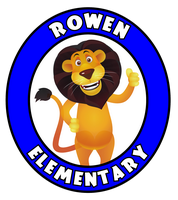5 Principles of Learning
1
Learning takes Time
It takes time to learn worthwhile academic content. Simply put, academic content can only be learned if students spend the amount of time needed to learn it. Moreover, students need different amounts of time to learn the same content. Therefore, differentiation of content, activities, assessment, and environment is necessary in order to give students the time they need to learn.
2
Learning is Social
Most learning is an interactive endeavor. Students learn best when they are able to meaningfully interact with their teachers, peers, technology, and worthwhile academic content. Students must be given opportunities to teach one another, transfer ideas, reinforce concepts, debate issues, and challenge one another’s thinking.
3
Learning is Personal
Meaningful learning involves the cognitive (head), the affective (heart), and the psychomotor (hands). Students who see the connection between academic content and their personal lives are more likely to be motivated, take risks, feel better about themselves and their learning, and pursue a high level of achievement. Therefore, learning is more than a cognitive exercise; students must fall in love with learning (affective) and be given opportunities to use all of their senses (psychomotor) to learn. Only then will learning become personal and students life-long learners.
4
Learning is Transferable
A key goal of learning is fluent and flexible transfer of discrete knowledge and skills. The curriculum should be built upon the two essential elements of understanding: big ideas and transfer tasks. Learning tasks should focus on helping students achieve successful transfer. The textbook should be a resource, but not the curriculum. Didactic teaching should not dominate instructional time, just as discrete football drills should not take up the majority of football practice on the field. Football players get better when given the opportunity to apply discrete skills on playing field . Since transfer is the goal of learning, significant amounts of instructional time should be devoted to students learning how and practicing to use content knowledge and skills to accomplish worthwhile tasks.
5
Effort produces Achievement
There was a time in our history when scholars believed that the chief indicator for academic achievement was inherited intelligence. We now know through numerous research studies that the amount of effort a student is willing to give has much more to do with one’s academic achievement than inherited talent or ability. The implications of this is remarkable. This means that given the right circumstances and support, almost anyone can achieve at high levels.
